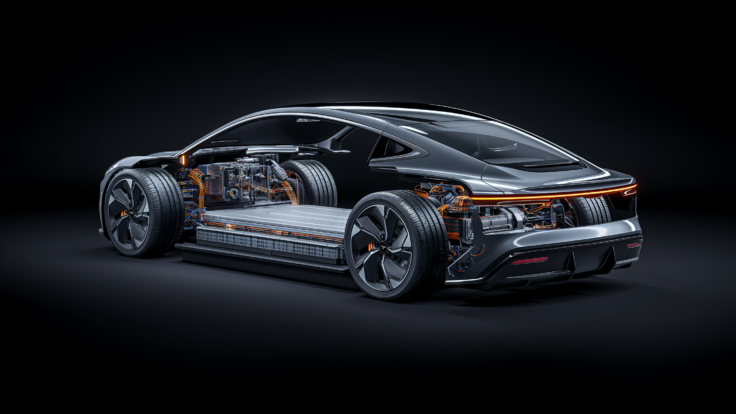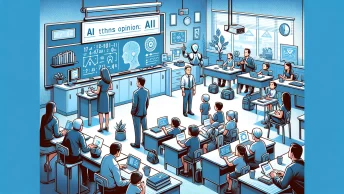Alternative Title: Become an Auto Mechanic
The electric vehicle (EV) market is not quite cratering, but a few blips have occurred that will slow the transition from gas to electric. The lagging effects of this will extend the lifespan of the internal combustion engine by decades.
Things in the EV space had been going well. In 2023, the American EV market saw explosive growth, crossing the sale of one million vehicles for the year. An increase of 52% over 2022. Projections hinted that this momentum would continue. Then, sales slowed.
In the first quarter of 2024, EV sales rose by 2.6% compared to the first quarter of 2023. That looks good until you see that EV sales fell by 15.2% compared to the last quarter of 2023.
There are several factors affecting these sales trends.
The first factor is that many automakers have struggled to scale EV production to meet demand. As companies overcome those challenges, those who want an EV can finally get one. This is part of the reason why we saw a year-over-year sales increase.
However, manufacturers are finding that consumers do not care to buy an EV, either due to lifestyle or cost. This is simultaneously dragging down sales, which is what contributed to such a significant quarterly drop in sales. Selling a million EVs is not nothing, but in America, we are buying 11.7 million new cars, and the growth of EV sales is not accelerating the way it needs to.
The second factor is that the Biden administration has finalized emissions targets for model year vehicles 2027 through 2032. These targets are lower than initially proposed. The EPA states that with these lower targets, automakers have more leeway in cutting emissions, and as a result, EVs are projected to comprise between just 35% and 56% of sales in 2032. Had Biden enforced the previously proposed targets, the EPA estimates that EVs could have made up to 67% of vehicle sales in 2032.
Slowing EV sales and relaxed emissions targets are disappointing. EVs have the potential to dramatically reshape roadways and the way people use their cars daily. At the same time, EVs remain a technology in its infancy and the infrastructure needed to support them is lacking.
What does all of this mean in the long run?
The Lagging EV Revolution
The push for EVs has been short-sighted. The technology powering EVs and how companies finance these technologies are not where they need to be.
Here is an example:
The 2024 Escalade V-Series costs $152,000. It features a supercharged 6.2L V8 engine that produces 682 horsepower and 653 lb-ft of torque and propels this 6290-pound luxury brick to 60 mph in the low 4-second range. The EPA rates the Escalade V-Series for 11 mpg in the city and 16 on the highway. Car and Driver observed 11 mph in testing.
GM makes billions in profits yearly from trucks and SUVs rocking large V8 engines like the one in the video above.
To GM’s credit, they have committed $35 billion to reach a 2035 target date for transitioning the company’s internal combustion engine (ICE) portfolio to EVs, including investments in new factories, retrofitting existing plants, and developing new technologies.
Nobody can argue that any CEO who would ditch their most profitable products in the name of environmentalism while there remains strong demand should be ousted by the end of the day.
It is a compromise, like Biden pulling back emissions targets in an election year to win over red states with a large automotive manufacturing presence. This includes the estimated 9.7 million jobs and hundreds of billions in taxes and salaries supported by those industries.
Eat more carbon emissions up front and get better EVs in the future. While delayed, it is a future that we want. According to the Harvard Gazette, a non-luxury EV buyer who drives between 28,069 and 68,160 miles will net a carbon benefit compared to a conventional gasoline car.
While not ideal, in the long term, EVs are more efficient with the electricity that powers them, even when that power comes from a source like a coal-fired plant, according to research from the Yale School of Environment.
The article goes on to say that around 90% of energy reaches the wheels of an EV. By comparison, in a gasoline-powered car, around 20% of the energy in the gasoline makes it to the wheel of your vehicle.
More interestingly, if you replaced every gasoline-powered car with an EV and charged every EV with a coal power plant, total energy use would still drop by 31% due to the efficiency of EV technology. Switch from coal to hydropower, and energy use would drop by 75%.
If worrying about emissions or the philosophies of environmentalism are not your thing, you may also be in the growing camp of people who advocate for hybrids, which combine the best of existing gas infrastructure with the benefits of battery technology.
People Want Hybrids
Toyota has been criticized for not being more aggressive in entering the EV market. A brand known for its hybrids and marketing that touts environmentalism, Toyota has stated that EVs are not the only way forward. The company has instead advocated for a multi-pronged strategy to reduce emissions, including hydrogen, hybrids, ICE, and EVs.
There is also the matter of the 5.5 million people in Japan who work for businesses that supply components for auto manufacturers who could be adversely affected by the EV transition.
Toyota also cites issues with sourcing enough batteries and the environmental toll of mining for minerals necessary to build them. An International Energy Agency report found that an electric car can require up to six times the mineral inputs of a conventional vehicle.
Due to a lack of materials to build enough batteries, Toyota says that for each EV they do not build, they could build ten plug-in hybrids or 100 hybrids.
Does the math check out?
For 2025, the Camry is only available as a hybrid and features a 0.6-kWh lithium-ion battery pack. Toyota’s first fully electric vehicle, the BZ4X, has a 71.4-kWh battery, which is the same as the battery capacity of 119 Camry hybrids.
The math fits.
Hybrids also fit many consumers’ existing lifestyles. This is one reason hybrid sales are growing rapidly, leading GM to admit they goofed by jumping straight to EVs. Now GM is looking to increase hybrid production as they slow EV production.
The ability to scale back on EVs ot hybrids is one advantage that GM and other legacy automakers have, and it is why we should watch them to see how the transition from ICE to EV plays out.
If Toyota is saying no to EVs and GM is pulling back its efforts, where does that lead all of these new EV startup companies that have followed in Tesla’s wake?
Doomed (Maybe) EV Brands
Other EV players cannot accomplish the same pivot back to hybrids.
Several EV startups have entered the market while riding the way of rising EV interest. But as detailed already, changing consumer sentiment, lagging technological innovation, and economic factors are putting many EV companies on the path to ruin:
- Fisker is the product of Henry Fisker, a former automotive designer. His first attempt at making a car was the Karma, a hybrid sedan Ellen famously gave Justin Beiber. The Karma failed, but Henry was sure his second attempt would work, according to a 2021 interview with CNN. Now, three years later, the Ocean crossover is an undisputed failure. At the time of reading this article, Fisker might already gone, and Ocean owners are up a creek without a paddle.
- Rivian took over an old Mitsubishi automotive plant to build all its tools and technology in-house for a lineup of electric vehicles. That technology now underpins Amazon’s new electric delivery trucks. Rivian has also had its share of problems in terms of quality, reliability, and software problems. Consumer Reports even put the brand on its list of one of the worst car brands in 2024. Nobody said building cars is easy, especially for a startup. The problem with Rivian is that they are entering a space that has matured, and for the starting price of more than $70,000, you are receiving a product that might disappoint in more ways than one. Granted, Rivian has committed to improving its products and is expanding its lineup with more entry-level vehicles, but still expects to report an EBITDA loss of $2.7 billion in 2024. So, if Rivian survives, it will be the result of the good graces of investors who continue to float the brand. The R3X looks unbelievably cool, so fingers crossed they survive another day.
- Lucid was initially founded under the Atieva name and supplies battery packs for Formula E. The Lucid Air, the company’s first consumer electric vehicle product, seeks to leverage the same racing technology across its future lineup. But Lucid has the same issues as Rivian. They build an expensive product starting around $70,000 that can quickly balloon to over $200,000. Despite the high price, the company loses substantial amounts of money, with a reported loss of $729.9 million for the first quarter of 2024. Like Rivian, Lucid has an interesting product, but whether that is enough to survive in the long term is another question entirely.
- VinFast is the automotive arm of the privately owned Vietnamese mega-conglomerate Vingroup. Pham Nhat Vuong, the company’s founder, saw an opening to develop and market EVs and to try and grab a share of the U.S. market. This has not gone as planned for two reasons. The first was bad press resulting from a poorly planned and mandatory battery subscription service for their debut product the VF 8. The subscription model required buyers to pay MSRP for the car, a subscription fee for 310 miles of range monthly, and an additional fee for each mile after that. This subscription model was later dropped, but it was not enough to save the disastrous launch of the VF 8. Journalists quickly found that the driving range is far less than the competition, the car suffers from poor ride quality, and a slew of other issues that you can learn about on the Donut YouTube Channel. Donus reviewed an updated version of the car later and found the VF 8 was no longer as bad. But with so much better competition, you should opt for a Tesla Model Y or a Ford Mach-E instead.
When you look at these EV brands, some had good intentions and tried to deliver innovation. But wrapped up within that is a lot of disappointment.
This puts consumers in a strange predicament. These EV companies are trying to come to market with a more exciting or unique product to steal market share from legacy automakers. But when all consumers hear about you is bad news, you start to think that all EVs are bad.
The other issue is that these automakers can not necessarily solve the underlying problems with EVs. If you live in California, opting for an EV makes a lot of sense. The availability of public chargers, including those from the government, and priority access to HOV lanes mean that an EV can complement your life.
But if you live in the midwest where the public charging network is limited and colder weather can sap 25% or more of your driving range, an EV starts to look bad when paying a large premium to buy an EV, you do not get the advertised range, and it takes 30+ minutes to charge your car.
Is an EV Revolution Possible by 2035?
Europe intends to ban gasoline-powered car sales by 2035, with most automakers seemingly on board. China has alluded to a goal of only approving the sale of “new energy vehicles” by 2035, whatever that means.
Other countries have proposed similar bans for 2030 and 2040, with a few countries making it clear they would not issue bans until 2050. Others have made no commitments for reasons that include a low number of automobiles on the road, less robust economies, or the inability to generate enough electricity regionally to recharge an EV.
Other than corporate interests, donors, and manufacturing workforces influencing policy positions, the leading issue with EV adoption is battery technology.
No, all is not lost. Both Toyota and Polestar have detailed innovations that might be around the corner. But the automotive space, like any other space, can be good at building hype that never matches reality. Here is what both companies are promising:
- Toyota claims that it will launch a solid-state battery option for its EVs in 2027. This technology will unlock the vaunted 10-minute recharge time and allow the vehicle to go from 10 to 80 percent charged. Solid-state batteries are also said to be more compact, lighter, and much safer than lithium batteries, which are prone to catching fire.
- Polestar recently unveiled a new battery technology with StoreDot that uses silicon-dominant battery cells, a newer form of chemistry than what is found with traditional lithium-ion packs. Polestar claims this technology can accomplish the same 10-minute recharge time as Toyota claims with its solid-state batteries.
If these technologies are the “holy grails” of the EV world and unlock more range and faster charging at a price that most people can afford, then transitioning fully to EVs in 2035 might happen.
But if these technologies prove to be duds, the EV market will be forced back to lithium ion technology that is well beyond its prime, is not economical, and has too many underlying issues.
Looking beyond battery technology, the other driving factor that may keep EVs out of consumer hands is cost. Compared to ICE counterparts, the cost to develop, build, and sell EVs remains high.
This can be overcome if governments were willing to sacrifice their domestic manufacturing base, as China has shown.
Currently, China beats America and Europe in terms of labor costs and subsidies. This means that many Chinese manufacturers are building more EVs than the Chinese can buy, and now they want to export them all over the globe. Some of those EVs are available for the equivalent of $10,000 U.S. dollars, when performing a straight conversion.
Pundits have argued that consumers in America and Europe would benefit from the competition created by the availability of Chinese EVs. The Biden administration does not agree and is pushing back on this as part of a broader infrastructure play to encourage more manufacturing in the U.S. As a result, Biden is moving to impose a 100% tariff on EVs imported from China.
Europe wants to impose its own tariffs on China, which German automakers oppose because China will likely retaliate, hurting BMW, Mercedes, and Audi’s profitability.
Analysts note that if governments are serious about the environment, allowing consumers to decide if they want to buy a cheaper Chinese EV makes sense given that the price of many EVs from domestic brands put them out of reach for many buyers. American businesses, unions, and auto workers disagree.
There are many competing interests at play that can influence what path we take towards the 2035 goal of abandoning ICE cars. If we are happy to trade slower adoption of EVs and the environment to protect American interests, then we might want to look beyond 2035. Perhaps even 2040 or 2050.
Delaying EV Adoption is Great for Auto Mechanics
The era we live in now is so exciting because we are at the forefront of this transportation revolution. But many things stand in the way of shifting from ICE to EV.
Our way of life is built around gas-powered transportation. EVs can fit our lifestyles, but the technology has not caught up to make them workable for those who live in colder climates, who do not have access to overnight charging at their apartment, or who can not waste 40 minutes sitting at a public charger because there was a family emergency and the range of your EV is barely 200 miles.
We also have to contend with the higher upfront costs of EVs. When interest rates were near zero percent, buying a $70,000 electric vehicle financed over eight years was workable for some people. Now, that same loan carries an 8% interest rate, and the cost of insurance, food, utilities, and property taxes has all gone up, EVs are an impossibility for even high income earners.
What happens over the next few years will determine the subsequent decades of automobile culture in America. This is bad news for the environment and those who want to see a broader transformation around transportation, and how we envision the future of roadways and cities.
But it is also good for auto mechanics and those looking to get into a trade. We need more good auto mechanics.
The National Automobile Dealers Association (NADA) estimates that around 39,000 techs graduate annually from training programs. But the automotive industry must replace nearly 76,000 techs yearly to keep up with retirements and new job demands.
The current shortage of auto mechanics is quite bad. If you have been to any shop lately, you might have seen it advertise shorter hours or be closed on days they are typically open.
The dissatisfaction with the field is what is driving people away. Browsing Reddit, many of the same complaints crop up: Working on modern cars is needlessly complicated, flat rates screw you over, you quickly fall behind on work while customers and management rush you, and poor work-life balance.
While that may not sound great, there does seem to be an upside.
With an ongoing shortage and shops hiring anyone who walks in off the street, if you are willing to learn the trade and work well with others, you can make a good career, especially if you want to open a shop and work for yourself.
And what else can you hope for now that the digital bubble has popped and the golden era of technology startups fueled by low interest rates and VC money that flowed effortlessly into people’s pockets is over? All of these folks who enjoyed the perks of office life will now have to find whatever manual labor job will have them – look to the auto shop.
There will be plenty of work for auto workers for decades to come. Remember, more than 250 million ICE cars are already on the road. The average vehicle age on the road has increased to 12.5 years, showing that people keep their vehicles longer. When ICE cars are no longer available, expect to see a lot of people hoarding those cars and keeping them on the road for longer.
It is exciting to watch the efforts that car companies are putting into designing, building, and marketing EVs, even if their business is not taking off or is on the brink of bankruptcy.
We are in a period not too dissimilar to that of the transition from horse and buggy to automobile. This era of automotive development will likely never be witnessed again—not unless teleportation or the mass adoption of flying cars becomes a reality. Maybe in another 100 years.
Buckle up and enjoy the ride powered by the flow of electrons into a promising new way of life once the technology and regulations finally catch up. Also, consider the advice of looking into becoming an auto mechanic.



